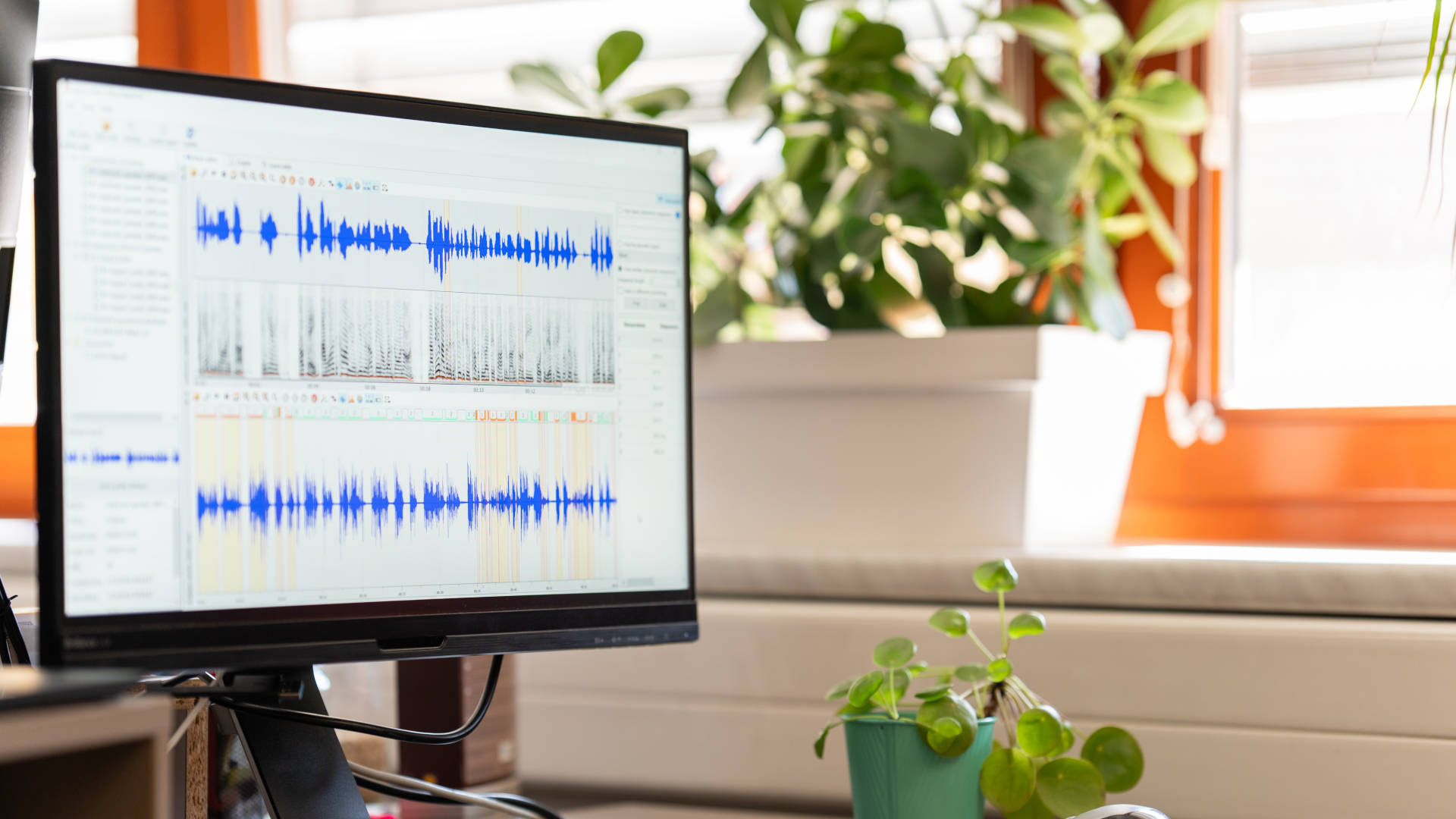7 Ways to Reduce the Average Handle Time (AHT) in Contact Centers

October 14, 2021
By Pavel Jiřík in Blog
Average Handle Time (AHT) is one of the most important metrics for call centers. Along with First Call Resolution, churn rate, and metrics related to customer satisfaction (Net Promoter Score, Customer Satisfaction Score, and Customer Effort Score), AHT is a key indicator to help maintain a high level of service.
This KPI is important because respecting your customers' time is the basis of providing a good customer experience. However, the constant drive to improve user satisfaction is competing with requirements to control costs while increasing the efficiency and productivity of contact centers. In other words, those responsible for call center operations are in a constant dilemma, trying to balance costs with a high quality customer experience.
The question is: can you improve the customer experience while reducing call center costs? This is one of the biggest challenges the industry faces. But one way to address this problem is to improve AHT (Average Handle Time). Fortunately, there are many solutions and changes that can be implemented in call center operations to do exactly that.
If you want to know ways to reduce your call center’s average handle time without compromising the quality of the service provided, keep reading this article.
What is Average Handle Time (AHT)?
Average Handle Time is a KPI that measures the average time of interactions between agents and customers in a contact center.
A standard formula for measuring AHT is as follows:
AHT = (total talk time + total hold time + after-call time) / total number of calls
In other words, calculating AHT considers the mean amount of time an employee spends handling an inquiry or incident both during the call and afterward. This metric can be calculated for particular agents, per department, or for the whole contact center.
As you can see from the formula, the elements that affect AHT are rather self-explanatory. However, when we talk about measuring and optimizing processes, it never hurts to start with clear definitions:
- Talk time - the total time your representatives are in conversation with customers.
- Hold time - the average time customers spend waiting for an agent to attend to them.
- After-call time (or ACW, After Call Work) - the time spent on tasks that a call center employee needs to perform to resolve a query before handling another call. These tasks may include taking notes after a call, sending emails, categorizing the conversation, or updating the CRM, etc.
So improving Average Handle Time is not only about simply shortening the conversations that agents have with customers. To achieve company-wide results, contact centers must take care of various aspects of their operations. Let’s move on to some practical tips.
How to Reduce AHT in Contact Centers?
As already stated, it’s possible to reduce the Average Handle Time of a call center without compromising the quality of its service, and there are many ways to do that. In this article, we will divide them into two groups - the first is related to tech solutions and tools while the second focuses on contact center workers and customers.
Tech Solutions and Tools That Can Reduce AHT
Passive Voice Biometrics Authentication
Implementing authentication solutions based on passive voice biometrics can considerably reduce the Average Handle Time in contact centers. Thanks to such solutions, agents do not have to spend time confirming callers’ identities at the beginning of each conversation because specialized software does it for them. In addition, the way passive voice biometrics authentication works is really straightforward.
First, a user must undergo an enrollment process to provide a unique voiceprint, which can happen during a regular conversation. A biometrics system needs just 20 seconds of a recording to save a voiceprint successfully and store it in the form of a mathematical model. Then, every time a person reaches out to that call center, their voice is automatically compared to the voiceprint saved in its database. This happens instantly during regular conversations and does not require the engagement of either callers or contact center agents. The latter do not need to ask knowledge-based questions and the former do not have to use any passphrases to be authenticated, as the whole process happens in the background.
This way, agents can start resolving customers’ issues right from the start of calls, maintaining all security standards, and reducing their Average Handle Time at the same time. Moreover, it’s a non-intrusive and entirely reliable method that does not compromise call center service quality but rather even increases customer satisfaction.
Speech Analytics Used to Categorize Calls
Every efficient call center should categorize all calls handled by agents. Typically, assigning a conversation to a certain category is the task of a contact center employee. They need to assess a call and decide what type of interaction they are having. This can happen during or after the call, but either way, it negatively influences the AHT. Using speech analytics automates this process and thus saves representatives’ time. Speech analytics software analyzes call recordings, automatically tags and indexes the keywords and phrases used during those conversations, and then assigns each call to the relevant category.
Instead of dealing with the mundane task of selecting tags in call center software, agents can start other conversations with customers. Another benefit of using speech analytics is a simplified process of reviewing customer-agent interactions. This, in turn, enables call center managers to assess employees’ performance faster, spot more mistakes quicker, and improve the customer experience. What’s more, better-trained representatives serve clients faster, which also positively influences Average Handle Time.
Self-Service Knowledge Base and FAQ Sections
Implementing a customer service knowledge base and frequently asked questions section brings benefits to both customers and call center workers. An external knowledge base or an FAQ allows customers to find answers to basic questions without the need for live agent assistance. This eliminates lower priority customer calls and enables your employees to focus on more important ones. Having this kind of resource available can also help agents during calls since they can quickly find a relevant knowledge base article and send it to the customer, which usually helps finalize a call faster.
Interactive Voice Response System
Interactive Voice Response (IVR) is a technology that allows callers to interact with a phone system using either their voice or by selecting certain digits on a phone keypad. Clients listen to pre-recorded messages (or voicebots in the case of conversational IVRs) and, based on their issue, select the department they want to contact. A well-implemented IVR system makes it easy for customers to find answers or connect with call centers representatives by following straightforward menu options or discussions with voicebots.
Thanks to that, fewer agents spend time talking to users who they must then redirect to other colleagues, which reduces the Average Handle Time as a result. At the same time, more clients get connected with the right representatives and have their issues resolved faster.
Also, a certain number of users won't have to connect to agents at all as they can find the answers to their problems through interactions with the IVR itself.
Reducing AHT - Contact Center Agents and Customers
Informing the Customer About Actions During the Call
When an agent needs to put a customer on hold or simply needs a moment to gather necessary information, it is crucial to let them know what is happening. Silence can be uncomfortable and confusing. This, in turn, can cause some customers to start irrelevant conversations with employees, which can extend calls for longer than is necessary.
Not knowing what is happening may also frustrate clients, resulting in unpleasant discussions between them and agents, who will have to spend time dealing with angry customers instead of resolving their issues.
Optimizing Agent Training and Endorsing the Sharing of Feedback
Average Handle Time is reduced as contact center representatives increase their ability to handle common problems and solve customer needs effectively. Therefore, provide them with adequate and comprehensive training - a CRM, software, hardware, business tools, company standards, etc. This will make them better prepared to handle issues in a timely and efficient manner, reducing AHT without compromising service quality.
When an agent struggles to perform, it's a good idea to spend more time with them working on their skills. Management should conduct routine evaluations of employees’ calls and share timely feedback. When necessary, supervisors should also offer additional coaching or mentoring sessions that address an agent's needs.
Another way to improve agent efficiency is to enable those with high call handling time (AHT) to learn from colleagues with a low AHT. Allow workers to listen to and analyze their peers' calls to create a space for sharing knowledge and providing positive and constructive feedback.
Empowering Agents
Management must ensure that call center agents are engaged, motivated, and feel that they are part of the team. This will have a direct influence on their performance, which correlates with the Average Handle Time.
To empower agents, make sure that you involve them in decision-making processes and solicit their feedback. These team members are at the front lines of your company and often know what aspects of your daily operations require changes or improvements.
Another way to empower employees is to give them the right tools. We have already discussed the role of technology in reducing AHT, but in this case, it is about the digital solutions and products used by call center workers. Make sure that the software your agents work with is reliable, customized, and adjusted to their daily work.
To support productivity, you should provide your employees with computer equipment and other hardware that works efficiently. Also, create an internal knowledge base that agents can access during interactions with customers. This will allow them to quickly find answers to questions they may not know how to address and resolve customer issues faster.
Efficiency and Quality
While reducing AHT is vital to providing efficient customer service, don't forget that quality counts above all. It is better to have one quality interaction that takes longer than expected than many short calls with the same customer that take more time in total and cause them to lose trust in the brand. Reducing the Average Handle Time can be achieved through different methods, but companies must never forget that customer satisfaction (as well as solving crucial inbound call center challenges) should be their top priority.


